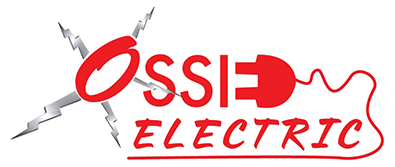EVSE
Installing a high-speed car charger or EVSE (electric vehicle service equipment) in your facility will serve as a point of differentiation. It can demonstrate your commitment to sustainable solutions for your local community or even be a recruiting element to get or retain prized employees for your company.
The sale of electric cars sold surged 26% to 199,826 units during 2017 despite overall car sales declining almost 2% in the United States. The likelihood is electric car sales will climb higher in the near future with the improved range of various models, decreased purchase prices, release of stylish designs, and the overall green movement focused on protecting the environment.
If you would like a free consultation or expert installation of EVSE in your workplace, call us at Ossie Electric.
EVSE can be level 2 (a few hundreds to over $1,000 in cost) or level 3 (potentially $10,000+) or level 4 (currently proprietary to Tesla). Here’s a brief overview of the differences:
- Level 1: 120V charging using a normal wall outlet which comes as a standard option on all electric cars.
- Level 2: 240V power operating between 30-50 amps @ 3.3 to 10 kW reducing charge time 60% - 75%.
- Level 3: Operating at 10-50 kW amperage, 80% of charge range can be achieved in under 30 minutes for models able to receive charging this way.
- Level 4: supercharging can add 400 miles of driving range directly to a battery in an hour.
In terms of charging time, in hours, here is a comparative table for select models:
| Model | 120V Standard | 240V Level 2 (L2) | Range 1HR @ L2 | Level 3, 80% |
| BMW i3 | 15 hours | 6 hours | 25 miles | 20 minutes to 30 minutes |
| Chevrolet Volt | 10-16 hours | 3 hours | 11 miles | 20 minutes to 30 minutes |
| Chevrolet Spark | 15-20 hours | 6 hours | 11 miles | 20 minutes to 30 minutes |
| Ford Fusion E | 18 hours | 7 hours | 22 miles | Not Available |
| Kia Soul EV | 19 hours | 7 hours | 22 miles | 20 minutes to 30 minutes |
| Honda Fit EV | 14 hours | 5 hours | 22 miles | 20 minutes to 30 minutes |
| Mitsubishi MiEV | 14 hours | 5 hours | 11 miles | 20 minutes to 30 minutes |
| Nissan LEAF | 18 hours | 6 hours | 11 miles | 20 minutes to 30 minutes |
| Toyota Prius | 3 hours | 2 hours | 11 miles | Not Available |
| Tesla Model S | 59 hours | 22 hours | 29 miles | Not Available |
| VW e-Golf | 20hours | 4-8 hours | 12-24 miles | 20 minutes to 30 minutes |
In many cars, adding high speed charging connections is an optional feature with an additional charge. For some models, level 3 is not available altogether. But for those cars so equipped, the table above demonstrates the significant value of adding EVSE to building residents or company employees. A standard 120V connection requires half a day to almost a full day to fully charge most models and adds only 2-5 miles of driving range with one hour of charging.
By comparison, level 2 fully charges most models in 2-7 hours, well within the time of a standard work day. In an emergency situation, one hour of level 2 charging can provide 10-25 miles of range, likely enough to get a driver home or power a return trip for a short errand.
Level 3 EVSE could charge models with the requisite receptacle to 80% of driving range within 20 to 30 minutes. Level 4 is currently a proprietary technology with a closed network operated by Tesla. Could some type of licensing or technology sharing be down the road?
Providing high speed charging could be offered for free, at cost, or as a profit center, not unlike providing free Cokes or installing a vending machine. Deploying solar panels on a roof or standalone structure could substantially reduce the cost of providing this electrified benefit. Tax incentives or TOU (time of use) discounted electricity rates may be offered by certain jurisdictions or utilities. Ford offers certain rebates for solar panel installation to power electric cars and figure Tesla’s acquisition of SolarCity will sow synergistic benefits in the near future.
One of the reason level 3 charging is discussed at 80% of driving range or battery capacity is due to “tapering”. Once past 50% full, charging electric cars slows or tapers. Above 80% full, an incremental unit of charge takes significantly longer compared to say 5% full. While not technically correct, think of this as “diminishing returns” for purpose of illustration.
Going “green” can be pursued in several ways and provides a halo effect for your organization, helps the environment and offers a real benefit to your building’s community. Call us at Ossie Electric to plan the acquisition, installation, and servicing of this exciting value-add!
